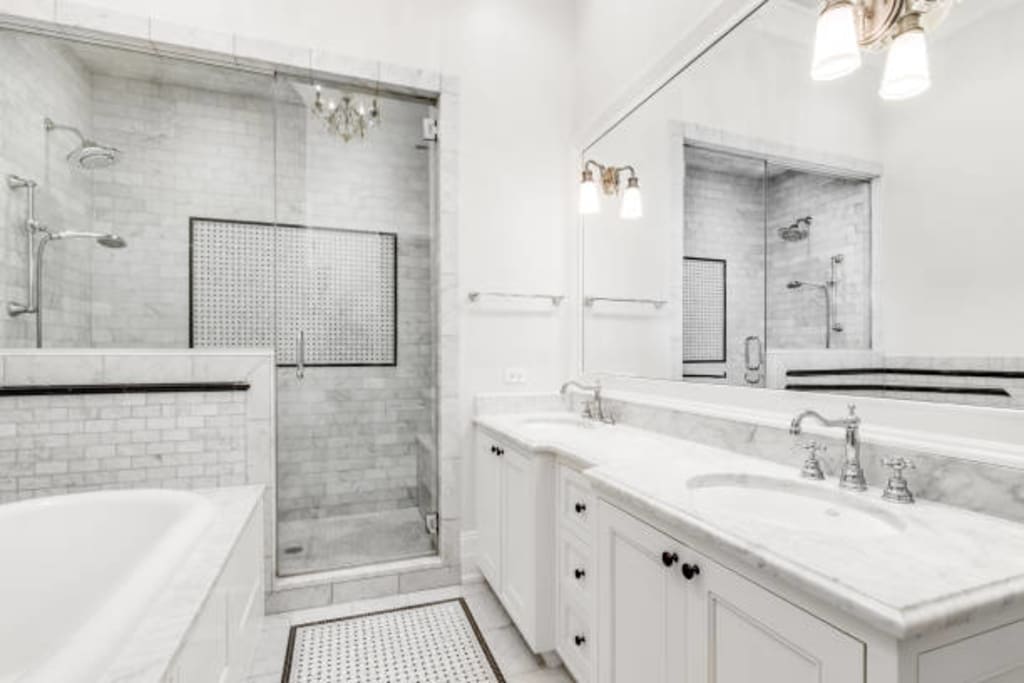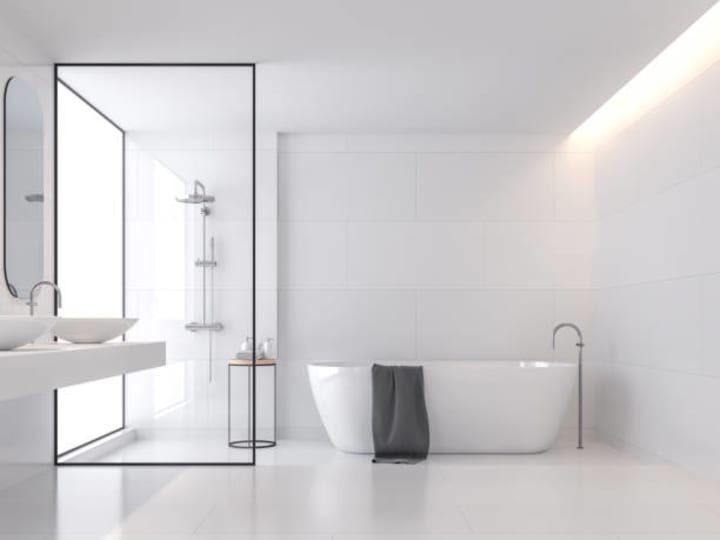Content warning
This story may contain sensitive material or discuss topics that some readers may find distressing. Reader discretion is advised. The views and opinions expressed in this story are those of the author and do not necessarily reflect the official policy or position of Vocal.
Transform Your Kitchen: Expert Tips, Design Ideas, and Step-by-Step Renovation Guide
Transform Your Kitchen: A Comprehensive Guide to Renovation Planning, Design, and Execution

The kitchen is often referred to as the heart of the home. It's where meals are prepared, conversations are had, and memories are made. Renovating this crucial space can significantly enhance your home's comfort, functionality, and value. This guide will help you navigate the complexities of kitchen renovations, ensuring a successful and satisfying transformation.
Why Renovate Your Kitchen?
There are several compelling reasons to renovate your kitchen:
Increased Home Value: A modern, well-designed kitchen can significantly boost your home's market value.
Improved Functionality: Tailoring your kitchen to better suit your needs can make cooking and entertaining more enjoyable.
Enhanced Aesthetics: A fresh, updated look can transform your kitchen into a stylish and inviting space.
Energy Efficiency: Upgrading to energy-efficient appliances and lighting can reduce utility bills and environmental impact.
Better Storage: A renovation can improve storage solutions, helping to keep your kitchen organized and clutter-free.
Planning Your Kitchen Renovation
Effective planning is crucial for a successful kitchen renovation. Start by considering the following steps:
Assess Your Needs: Determine what you want to achieve with your renovation. Consider factors such as layout, storage, and appliances.
Gather Inspiration: Look for design ideas in magazines, online platforms, and home improvement shows.
Create a Wish List: List all the features and elements you want in your new kitchen, from countertops to lighting.
Draft a Floor Plan: Sketch out your desired layout, considering workflow and space utilization.
Setting a Budget
Setting a realistic budget is essential to avoid overspending. Consider these points:
Determine Your Spending Limit: Decide how much you can afford to spend on your renovation.
Allocate Funds Wisely: Prioritize essential elements such as cabinetry, appliances, and labor costs.
Include a Contingency: Set aside 10-20% of your budget for unexpected expenses.

Choosing a Design Style
Selecting a design style that suits your taste and complements your home is crucial. Here are some popular kitchen design styles:
Modern: Sleek lines, minimalistic design, and high-tech appliances.
Traditional: Classic elements, detailed cabinetry, and warm colors.
Transitional: A blend of modern and traditional elements.
Farmhouse: Rustic charm, open shelving, and vintage fixtures.
Industrial: Exposed brick, metal accents, and utilitarian design.
Selecting Materials and Finishes
The materials and finishes you choose will define the look and feel of your kitchen. Consider the following:
Countertops: Granite, quartz, marble, and laminate are popular choices.
Cabinetry: Opt for durable materials like solid wood or plywood.
Flooring: Tile, hardwood, and vinyl are excellent options for kitchen flooring.
Backsplash: Choose from materials like ceramic tile, glass, and stone.
Hardware: Select handles and knobs that complement your overall design.
Hiring Professionals
Hiring the right professionals can make or break your renovation project. Here’s how to choose:
Research and Referrals: Ask for recommendations and read reviews online.
Check Credentials: Ensure contractors are licensed, insured, and experienced.
Interview Candidates: Meet with potential contractors to discuss your project and get quotes.
Review Contracts: Carefully review contracts and make sure they include all agreed-upon details.
DIY vs Professional Renovations
Deciding between DIY and professional renovations depends on your skills and the complexity of the project:
DIY Renovations: Cost-effective for minor updates like painting or installing new hardware.
Professional Renovations: Essential for major tasks such as plumbing, electrical work, and custom cabinetry.
Essential Kitchen Features
Incorporate essential features to enhance functionality and aesthetics:
Smart Storage: Install pull-out shelves, lazy Susans, and custom cabinets.
Quality Lighting: Combine task, ambient, and accent lighting for a well-lit space.
High-Quality Appliances: Invest in reliable, energy-efficient appliances.
Functional Layout: Ensure a practical workflow with the kitchen work triangle (sink, stove, refrigerator).
Renovation Process Step-by-Step
A step-by-step guide to the kitchen renovation process:
Demolition: Remove old cabinets, appliances, and fixtures.
Plumbing and Electrical: Update plumbing and electrical systems as needed.
Framing and Drywall: Build new walls or modify existing ones.
Flooring Installation: Lay down new flooring.
Cabinetry and Countertops: Install cabinets and countertops.
Appliance Installation: Set up new appliances.
Backsplash and Finishes: Install backsplash and complete finishing touches.
Final Inspection: Ensure everything is installed correctly and functioning.
Common Mistakes to Avoid
Avoid these common pitfalls during your kitchen renovation:
Lack of Planning: Failing to plan can lead to costly mistakes.
Underestimating Costs: Not accounting for all expenses can blow your budget.
Ignoring Workflow: A poor layout can hinder kitchen functionality.
Skimping on Quality: Low-quality materials and fixtures may need replacement sooner.
DIY Overreach: Tackling complex tasks without the necessary skills can cause problems.
Post-Renovation Tips
Once your renovation is complete, follow these tips to maintain your new kitchen:
Regular Cleaning: Keep your kitchen clean to maintain its appearance and functionality.
Proper Maintenance: Follow manufacturer guidelines for appliance maintenance.
Organization: Keep cabinets and drawers organized to maximize space.
Periodic Updates: Update small elements like paint and hardware to keep your kitchen looking fresh.
Renovating your kitchen is a significant investment that can greatly enhance your home’s value and your quality of life. By carefully planning your renovation, setting a realistic budget, and choosing the right materials and professionals, you can create a beautiful, functional kitchen that meets all your needs. Remember to focus on both aesthetics and practicality, and avoid common mistakes to ensure a smooth renovation process. With thoughtful execution, your dream kitchen can become a reality, providing you with a space where you’ll love to cook, entertain, and create lasting memories.
About the Creator
Maria Dodds
Professional Content Writer
Enjoyed the story? Support the Creator.
Subscribe for free to receive all their stories in your feed. You could also pledge your support or give them a one-off tip, letting them know you appreciate their work.






Comments
There are no comments for this story
Be the first to respond and start the conversation.